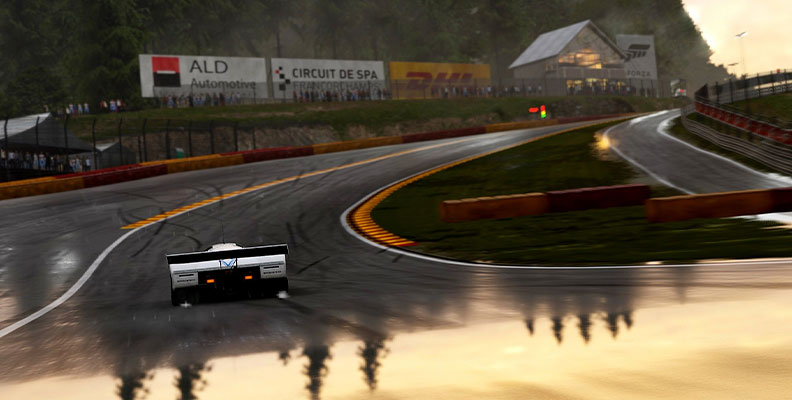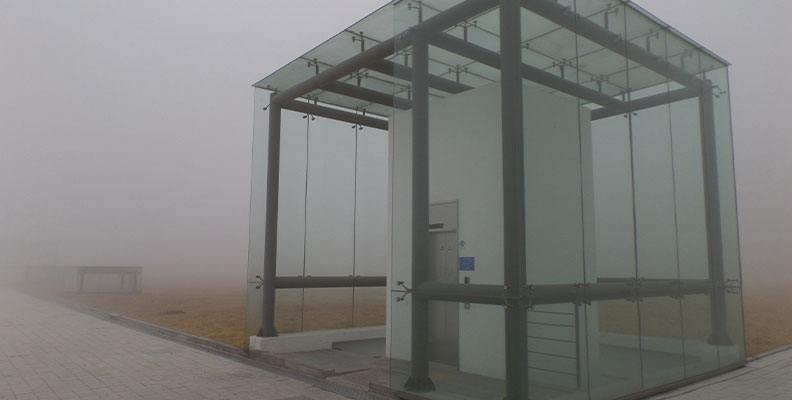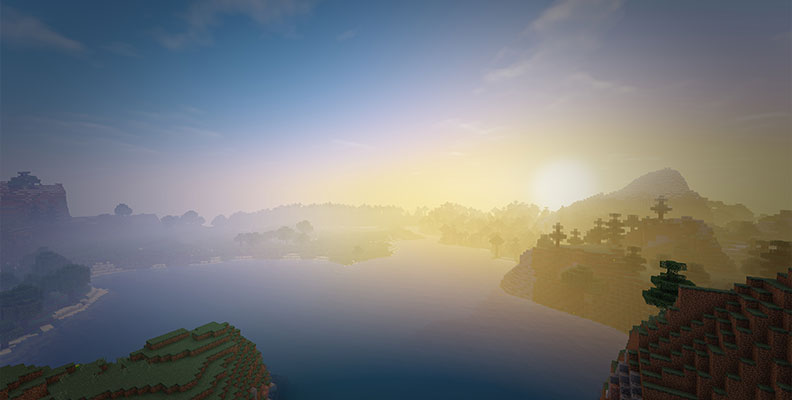The gaming industry is rapidly expanding with each new year passing by. New game genres are emerging, professional gamers are being acknowledged as eSport athletes across the globe, and live streamers and content creators are earning a livelihood by showcasing games.
As developers keep making new content, they must find improved and fresh ways to deliver immersive experiences to gamers, most of which visual effects take the credit for. It's safe to say that games are not what they were a decade ago, with the first obvious difference to compare the overall visuals.
In this guide, we'll talk about visual effects, how they make game worlds look much more immersive, "alive", and attractive, their importance throughout the whole game development process, what VFX artists are, what goes into the process of creating realistic environmental effects, and much more.
We have much to cover, so without further ado, let's get straight into it.
What is VFX in Gaming
"VFX" is an abbreviation for "Visual Effects" in both the video game and film industries. In video games, visual effects refer to any elements implemented to enhance the game's atmosphere, immersion, and visual appeal.
Visual effects in games may include particle effects, such as explosive effects, smoke, water, lasers, fire, and other similar elements. They make the game feel more "alive" and responsive to the player's actions.
For example, if a player collects a coin in a video game, and the only thing they see is the counter go up by a number, we can all agree that the design isn't very satisfying. But, if the developers add bursting gold particle effects along with a satisfying sound, even making the gold counter flash and transform into a different number, the player would feel a lot more motivated to keep collecting coins.
The same applies to a different scenario, such as fighting, for example.
When you hit or slash a character or a monster in a game, there has to be some type of "hit" or damage-inflicting indicator VFX, like the enemy character flashing white for a second, which is a common, signature example in older arcade-type fighting games.
Visual effects simply make game worlds feel more alive and responsive to the player's actions, and since the main goal of video games is satisfaction, it's safe to say that well-designed visuals shown on the screen alongside the main content make for a more enjoyable experience.
Depending on the size of the studio and the number of developers working on the game, there could be a dedicated team of VFX artists whose task is to create visual effects for the game. However, this is not always the case, especially not with indie studios.
Now that you know what visual effects are and how they help bring game worlds to life, let's take a look at some of the different types of VFX used in video games.
Types of VFX Used in Video Games
In this section, you'll find some of the most common types of visual effects used by game developers to create realistic environments and enhance the overall user experience.
Here are the most popular visual effects sorted into categories.
- Particle Effects: These include things like smoke, fire, sparks, dust, and other small, dynamic elements that add realism to scenes.
- Environmental Effects: This category includes weather effects such as rain, snow, fog, and wind, which contribute to the atmosphere and immersion of the game world.
- Lighting Effects: These effects manipulate light sources in the game environment to create realistic shadows, reflections, and dynamic lighting.
- Explosions and Destruction: Explosions, crumbling buildings, and other destruction effects add excitement and realism to action-packed sequences.
- Fluid Simulation: Fluid effects simulate the behavior of liquids such as water or lava, adding realism to bodies of water, splashes, and other fluid interactions.
- Cloth Simulation: Cloth effects simulate the movement and behavior of fabrics and materials, such as flags waving in the wind or character clothing.
- Motion Blur: Motion Blur in Games is used to simulate the blurring effect that occurs when objects move quickly, enhancing the sense of speed and fluidity in gameplay.
- Depth of Field: Depth of field effects simulate the way our eyes focus on objects at different distances, adding realism and visual interest to scenes.
- Post-Processing Effects: These effects are applied to the entire scene after rendering and can include things like bloom, lens flares, chromatic aberration, and color grading, enhancing the overall visual style of the game.
- UI and HUD Effects: Visual effects are also used in the game's user interface and heads-up display (HUD) to convey information to the player, such as health bars, status effects, and interactive elements.
Of course, these are not all effects seen in game development. Sometimes, to create immersive game worlds, developers come up with whole new visual effect concepts that even interact with the main gameplay mechanics.
One of the most well-known examples is the V.A.T.S. system seen in Fallout.
Another well-known example is Max Payne's signature slow-motion gameplay feature. Now, this is an entire game mechanic, but the slow-motion look would not be as immersive and effective without the visual effects shown on screen, like bullet trails and more. We also see this in Sniper Elite.
The "Eagle Vision" power featured in Assassin's Creed is another great example of how VFX artists can make a huge impact in the game development process by creating and linking a very interesting visual effect with a core gameplay mechanic.
So, it's safe to say that besides realistic character animations, well-crafted environments, and precisely modeled characters, VFX can have a significant impact on various aspects of the game and be equally as important as every other element.
Role of VFX in Gaming

The role of visual/video effects in video games can vary a lot depending on the project.
For some games, the sole purpose of VFX is to increase immersion, create stunning visuals, and make the whole game look "prettier" to the eye. But, for other projects, the VFX artist can have a much more important role in the video game development process.
For example, in atmospheric/exploration games, fog, which is often added as an effect, is a core mechanic. The whole point of the scenery and level design in such games is to make the player unable to see far from where they are so that they spend more time exploring new areas. So in this case, the fog also has a functional role, besides providing the atmosphere and aesthetics.

But, this is not all you can do with such a versatile effect, such as fog.
In video games, fog is an effective tool for optimizing performance in open-world or expansive environments. By limiting the visibility of distant objects, fog reduces the amount of rendering required, thereby improving frame rates and overall performance, particularly on lower-end hardware or consoles. It allows developers to create visually rich and expansive game worlds without sacrificing performance.

Also, by creating different quality levels of games VFX, developers make their games more accessible to people with different system setups. This allows gamers with top-notch rigs to enjoy the game to its fullest beauty but also allows those with older computers to "tone down" some of the effects so that the game has a playable framerate on their end.
These are just a few examples, but they really show you how important the role visual effects and VFX artists play in the whole process of game development is. However, they are often overlooked, so we believe those who mastered digital art software and are creating realistic environmental effects and other visuals behind the scenes deserve more credit.
Real-Time VFX and Virtual Production in Gaming
Real-time visual effects (VFX) and virtual production are two closely related areas in the gaming industry that have undergone remarkable progress in recent years, mainly due to the emergence of advanced technologies like Unreal Engine and Unity.
Real-time VFX refers to the integration of instantaneous VFX in video games, while virtual production is a technique that brings together live-action filming and computer-generated imagery (CGI) in real time. The advancements in these technologies have revolutionized the gaming industry, enabling game developers to create immersive and lifelike experiences for players.
In this section, you'll find a breakdown of each one.
-
Real-Time VFX
Key components of real-time VFX include:
- Particle systems: Used for creating effects like fire, smoke, sparks, and debris.
- Shaders: Programmable graphics effects that manipulate light and color to achieve various visual effects.
- Physics simulations: Used for simulating realistic behavior of objects, fluids, and cloth.
- Lighting effects: Including dynamic lighting, reflections, and global illumination to enhance the overall visual quality.
- Post-processing: Such as color grading, depth of field, and motion blurring add cinematic quality to the visuals.
Real-time VFX artists often use specialized software like Unreal Engine's Niagara system, Unity's VFX Graph, Houdini, and various other tools to create and implement these effects into games.
-
Virtual Production
Key aspects of virtual production in gaming include:
- Real-time rendering: Using game engines like Unreal Engine or Unity to render high-quality visuals in real time.
- Motion capture: Capturing actors' performances and translating them into digital characters or animations.
- Virtual sets: Creating digital environments that actors can interact with in real time, often using green screens or LED walls for immersive experiences.
- Live compositing: Combining live-action footage with virtual elements in real time to create seamless integration between the physical and digital worlds.
Virtual production techniques allow game developers to create cinematics and trailers more efficiently, iterate on content rapidly, and explore creative ideas in a collaborative environment.
The Future of VFX in Games
In the future, it's almost certain that VFX artists and game developers will find ways to improve the looks and realism of special effects in games, and even more importantly, close the gap between what's offered as an experience and what's required performance-wise of the player's system for running the game.
Just as the motion capture technology reinvented how animations are done, we're quite positive that AI and other technological advances will make creating stunning VFX, game mechanics, game art, game characters, and immersive environments much easier and more optimized and available for everyone.
We believe that in the future, VFX in games will focus even more on realism, making the environment look and feel as close as possible to what it is like in real life. This will most likely include environmental changes based on the player's actions up to the slightest detail, like demolishable environments, as well as character model details based on actions, such as realistic scars.
VFX in Gaming with Boris FX Continuum and Sapphire
A lot of gaming content goes through editing before being published online, especially things like highlight montages, streamer fail moments, etc.

Boris FX's plug-ins can help you make the things you've recorded look even better by utilizing effects from the Continuum and Sapphire packages in your favorite editing software.
Here's a video example of what you can achieve and the process behind it.
Sometimes, amplifying the video game effects using even more powerful video effects can bring the viewer's experience to a whole different level, and that's what experienced editors do in masterpiece montages such as Clockwork 4 by NikkyyHD.
Final Words
That covers everything you need to know about VFX in games, what they are, how they contribute to making the games you play look and run much better on your system, and more.
Hopefully, this information will be useful for your future projects and will allow you to create something wonderful.
Thank you for reading and good luck!


